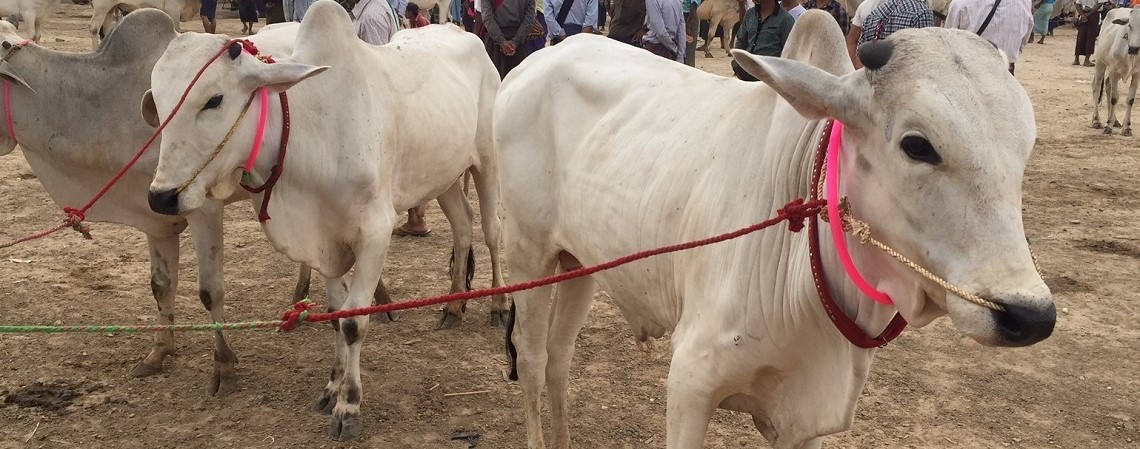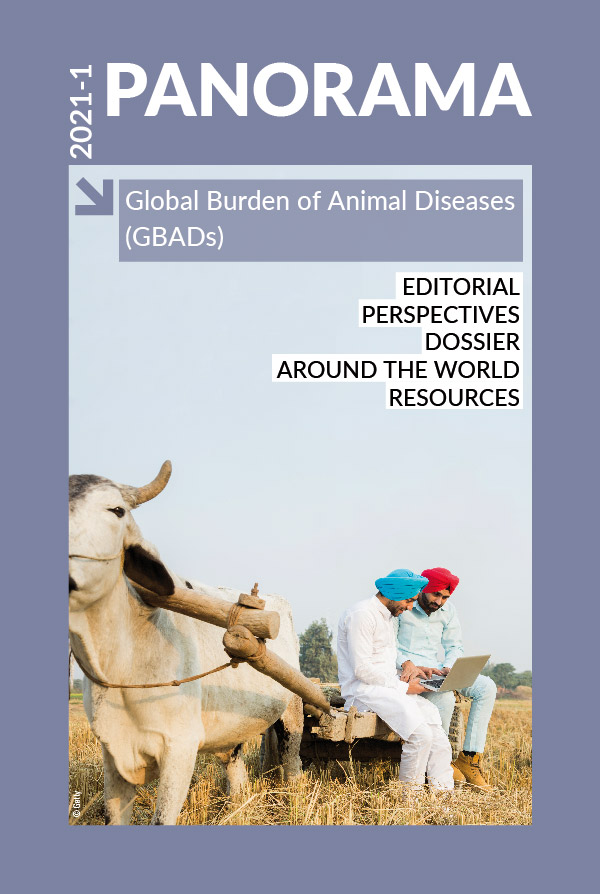Dossier Posted on 2021-08-16 11:13:18
Animal health ontology and attribution
Linking key elements in the GBADs programme
Keywords
Authors
M. Bruce (1)* & K.M. McIntyre (2)
(1) Senior Lecturer Veterinary Epidemiology, Centre for Animal Production and Health, School of Veterinary Medicine, Murdoch University, Australia.
(2) Senior Analyst, GBADs, Department of Livestock and One Health, Institute of Infection, Veterinary and Ecological Sciences, University of Liverpool, United Kingdom.
* Corresponding author: Mieghan.Bruce@murdoch.edu.au
The designations and denominations employed and the presentation of the material in this article do not imply the expression of any opinion whatsoever on the part of the OIE concerning the legal status of any country, territory, city or area or of its authorities, or concerning the delimitation of its frontiers and boundaries.
The views expressed in this article are solely the responsibility of the author(s). The mention of specific companies or products of manufacturers, whether or not these have been patented, does not imply that these have been endorsed or recommended by the OIE in preference to others of a similar nature that are not mentioned.
Animal health ontology
The development of digital technologies in agricultural infrastructure produces large quantities of data that provide information on the structure of animal populations and production systems and enable the compilation of health-related records, e.g. disease reports, clinical observations. Collation and synthesis of these data will facilitate understanding of livestock health systems and the burden of disease [1].
An ontology organises data resources into meaningful, computer-readable information [2], allowing characterisation of key data concepts and categories, facilitating understanding of relationships between data resources, and providing digital representation of core subjects.
Animal health ontology (AHO) supports the interoperability of data collated for the Global Burden of Animal Diseases (GBADs) programme by building on existing ontologies [3, 4] and harnessing GBADs’ international expertise in animal health, economics and informatics.
An ontology is a representation of the animal health domain (or part thereof) where key concepts, as well as the relationships between those concepts, are defined.
Using ontologies to link GBADs’ methods and metrics to OIE–WAHIS, global data sets (e.g. FAOSTAT), published research, and government and private-sector databases will allow seamless integration of these systems.
Disease attribution
Quantifying the burden of specific diseases, e.g. foot and mouth disease (FMD), helps us to determine the appropriateness of current control expenditure and to understand where additional resources should be assigned. In FMD-free countries, disease incursions are mitigated by large investment in surveillance and border-control measures [5]. In contrast, where FMD is endemic, local outbreaks can have devastating effects, with related losses being 16–60% of annual household income [6]. Other factors to consider include: the livestock production system; country/region/zone-specific trade agreements; and seasonal aspects determining production losses.
AHO and attribution methodology will integrate components of GBADs, transforming core subject understanding to inform priority setting in the animal health sector.
https://doi.org/10.20506/bull.2021.1.3260
References
- Drury B., Fernandes R., Moura M.F. & de Andrade Lopes A. (2019). – A survey of semantic web technology for agriculture. Info. Process. Agri., 6 (4), 487–501. https://doi.org/10.1016/j.inpa.2019.02.001.
- Slater L.T., Gkoutos G.V. & Hoehndorf R. (2020). – Towards semantic interoperability: finding and repairing hidden contradictions in biomedical ontologies. BMC Med. Inform. Decis. Mak., 20 (Suppl 10), 311. https://doi.org/10.1186/s12911-020-01336-2.
- Arnaud E., Laporte M.A., Kim Soonho, Aubert C., Leonelli S., Miro B., Cooper L., Jaiswal P., Kruseman G., Shrestha R., Buttigieg P.L., Mungall C.J., Pietragalla J., Agbona A., Muliro J., Detras J., Hualla V., Rathore A., Das R.R., Dieng I., Bauchet G., Menda N., Pommier C., Shaw F., Lyon D., Mwanzia L., Juarez H., Bonaiuti E., Chiputwa B., Obileye O., Auzoux S., Yeumo E.D., Mueller L.A., Silverstein K., Lafargue A., Antezana E., Devare M. & King B. (2020). – The Ontologies Community of Practice: A CGIAR initiative for big data in agrifood systems. Patterns, 1 (7), 100105. https://doi.org/10.1016/j.patter.2020.100105.
- Dórea F.C., Vial F., Hammar K., Lindberg A., Lambrix P., Blomqvist E. & Revie C.W. (2019). – Drivers for the development of an Animal Health Surveillance Ontology (AHSO). Prev. Vet. Med., 166, 39–48. https://doi.org/10.1016/j.prevetmed.2019.03.002.
- Knight-Jones T.J. & Rushton J. (2013). – The economic impacts of foot and mouth disease – what are they, how big are they and where do they occur? Prev. Vet. Med., 112 (3–4), 161–173. https://doi.org/10.1016/j.prevetmed.2013.07.013.
- Nampanya S., Khounsy S., Phonvisay A., Young J.R., Bush R.D. & Windsor P.A. (2015). – Financial impact of foot and mouth disease on large ruminant smallholder farmers in the Greater Mekong Subregion. Transbound. Emerg. Dis., 62 (5), 555–564. https://doi.org/10.1111/tbed.12183.










